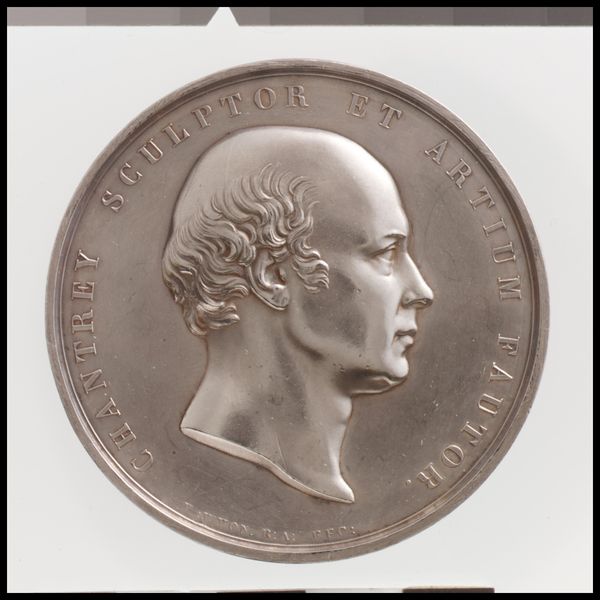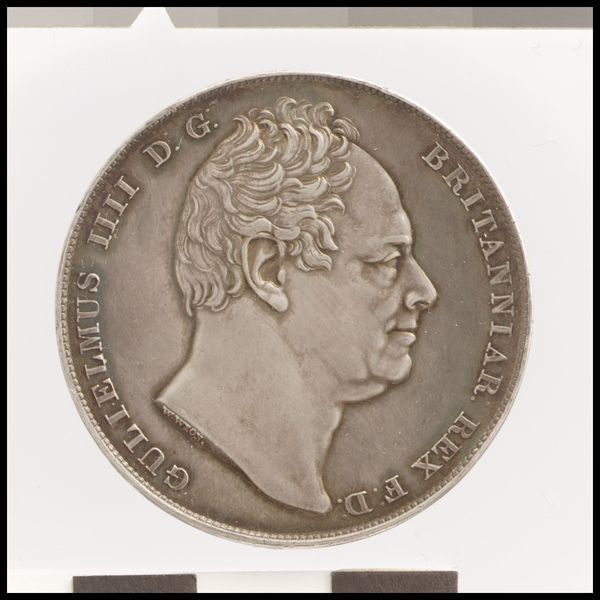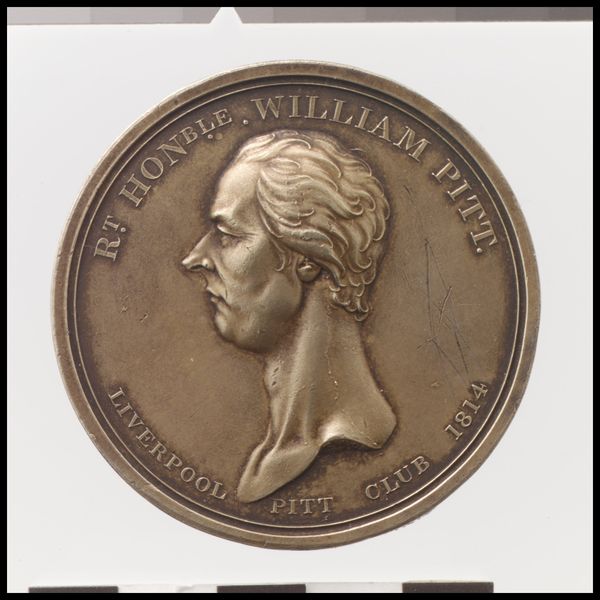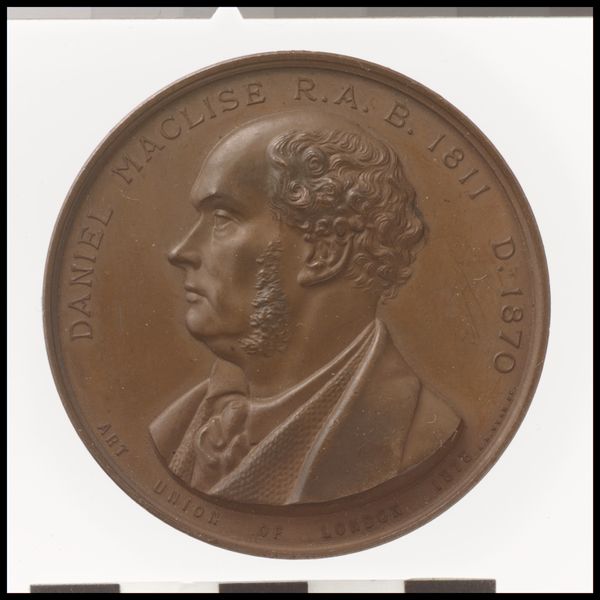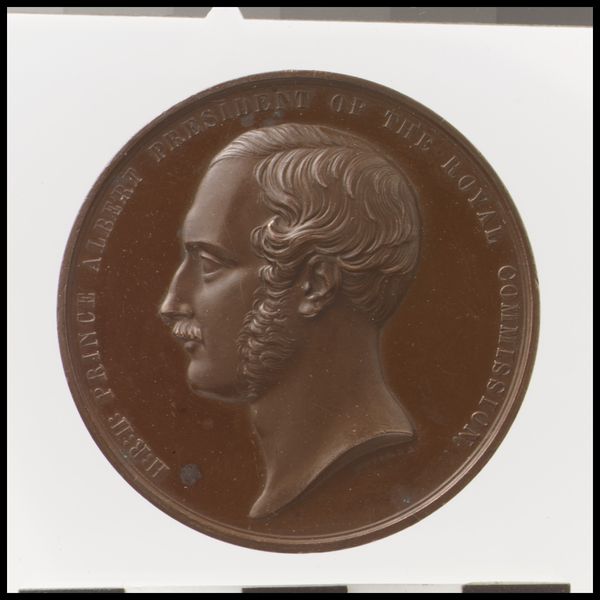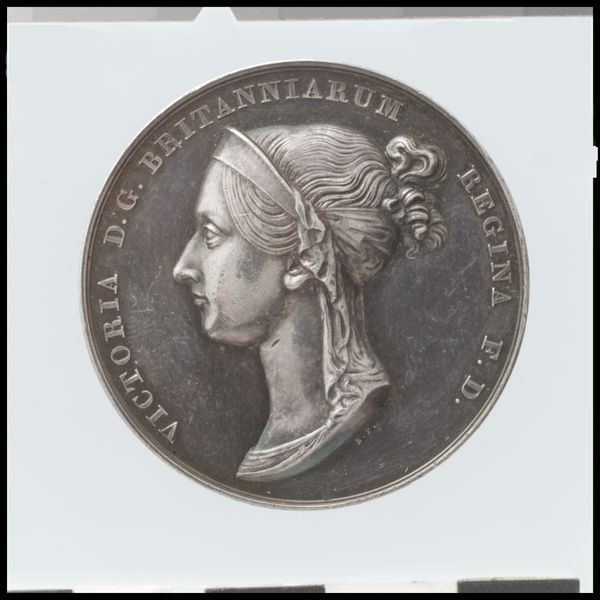
silver, print, metal, sculpture
#
portrait
#
medal
#
neoclacissism
#
silver
# print
#
metal
#
stone
#
sculpture
#
sculpture
#
decorative-art
#
profile
Dimensions: Diameter: 7 13/16 in. (198 mm)
Copyright: Public Domain
Editor: So, here we have "William Pitt," a silver medal created in 1813 by Thomas Wyon the Younger, residing here at the Met. I'm immediately struck by the stark profile and the cold, almost clinical feel of the silver. It feels like a memento mori, or perhaps a commemoration? What do you see in this piece? Curator: You know, when I gaze upon this rather serious likeness, I imagine the weight of history, the echo of debates long past… Silver, in its cool gleam, wasn't just about wealth; it mirrored the esteem in which Pitt was held, almost like capturing a statesman's soul in a precious substance. Do you feel that austerity, that deliberate distance from, say, a warm, fleshy portrait? Editor: Definitely. It lacks the human touch you'd find in a painted portrait. The clean lines feel very Neoclassical, almost like a Roman emperor on a coin. But I am curious, how did this commemorative medal end up at the Met, and why now? Curator: That's the intriguing bit, isn't it? These medals often bounced from private collections to museums, whispers of a bygone era seeking a permanent home. And why now? Well, isn’t art about sparking a dialogue across time? Doesn't seeing Pitt's face prompt us to consider leadership, legacy, even the cost of political conviction in our present day? Editor: I suppose so. It's like holding a conversation with history in the palm of your hand. I wouldn't have thought about the impact of seeing this portrait today if you hadn't put it like that! Curator: Precisely. Art holds a mirror to us as much as it does to the past, always reshaping our perspective in the present.
Comments
No comments
Be the first to comment and join the conversation on the ultimate creative platform.
